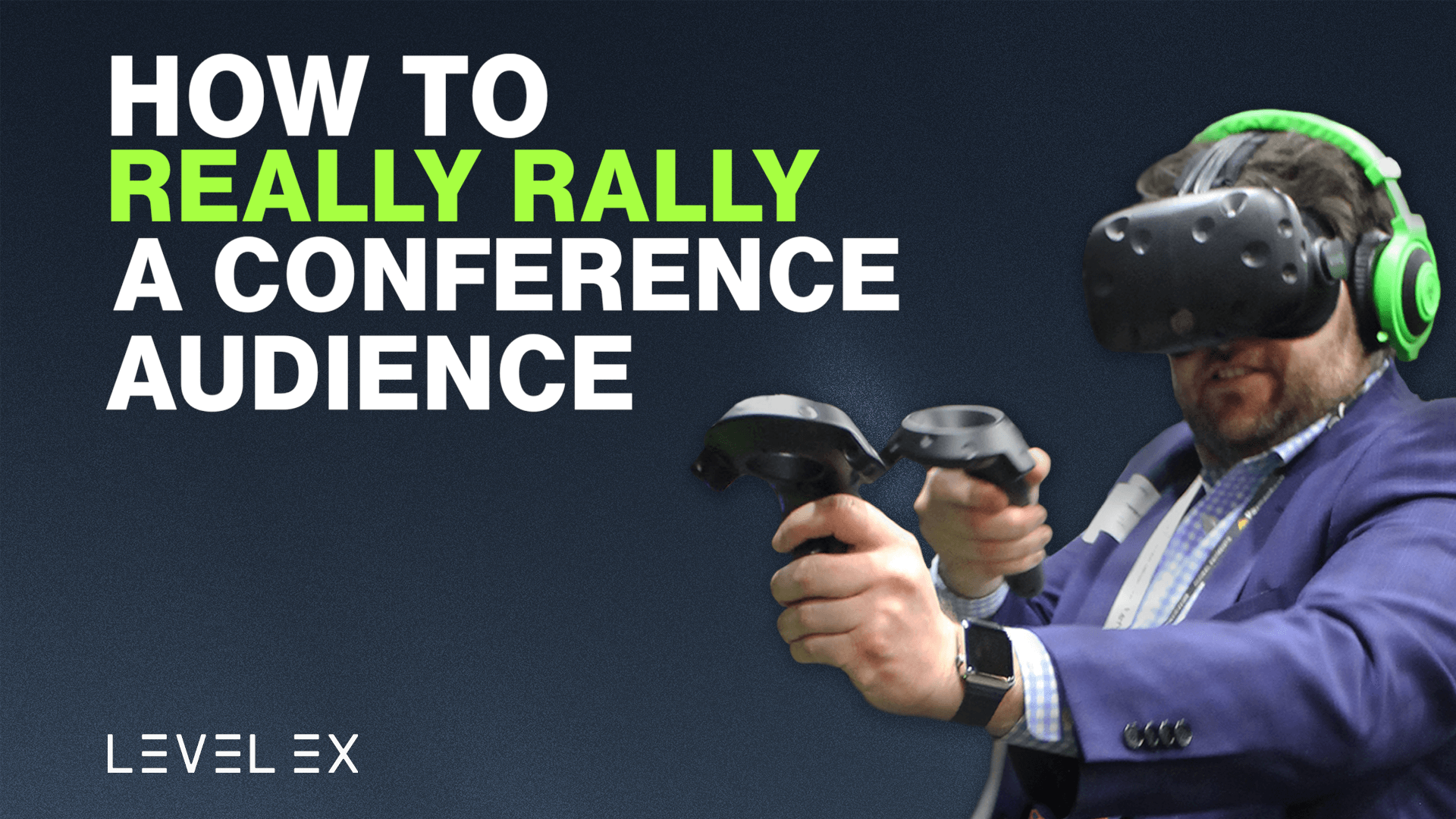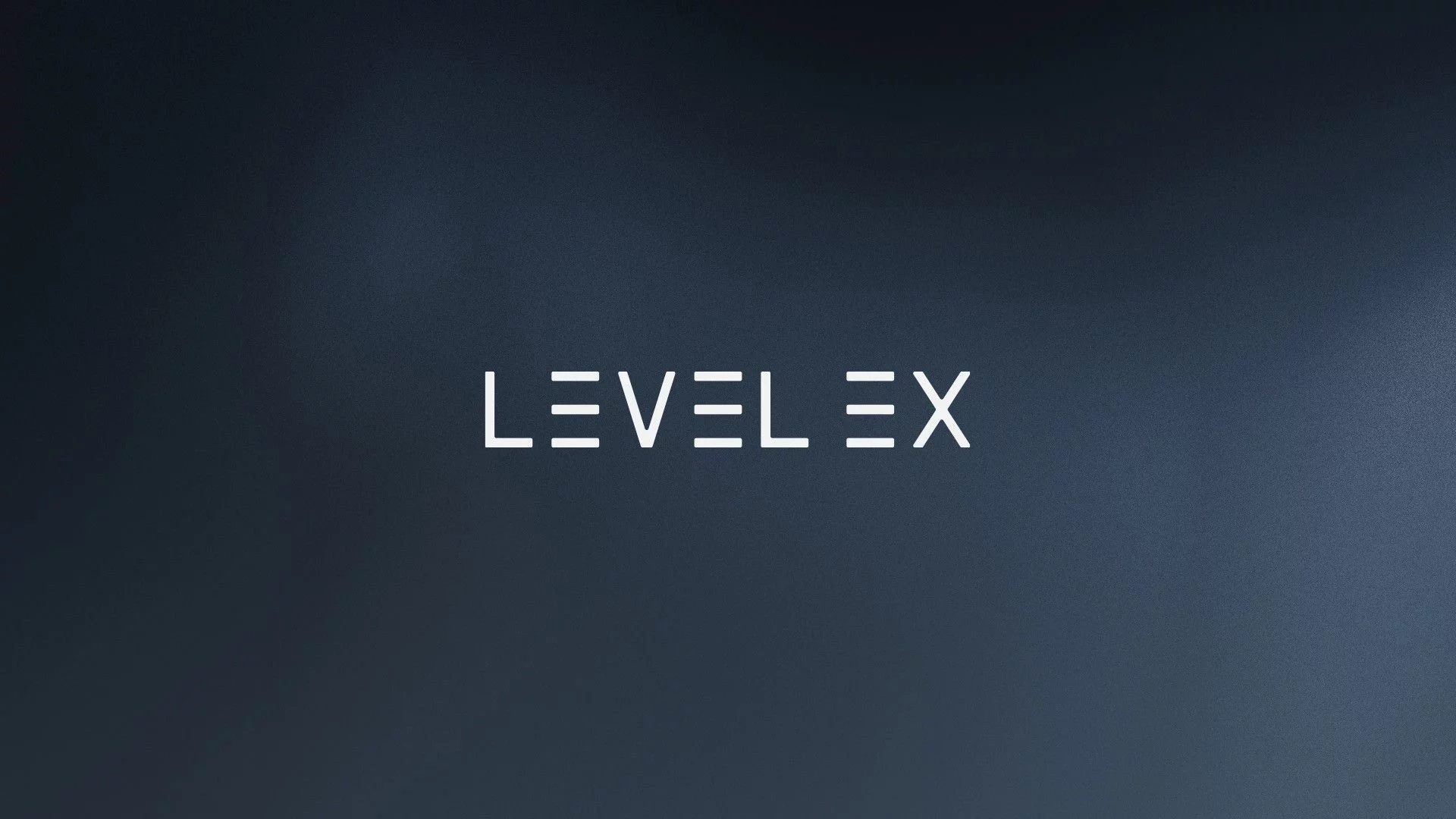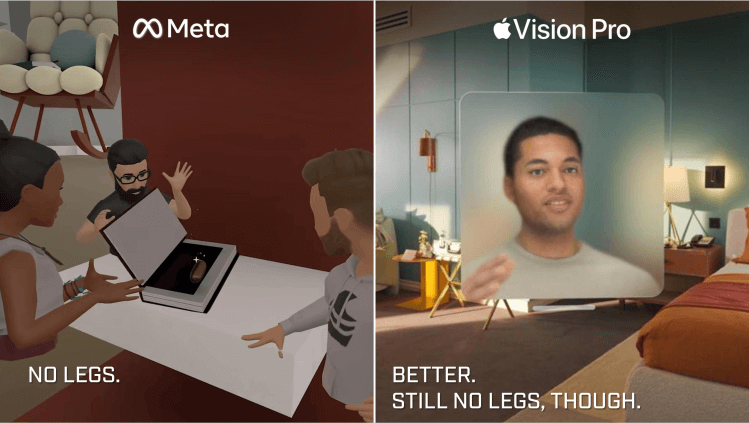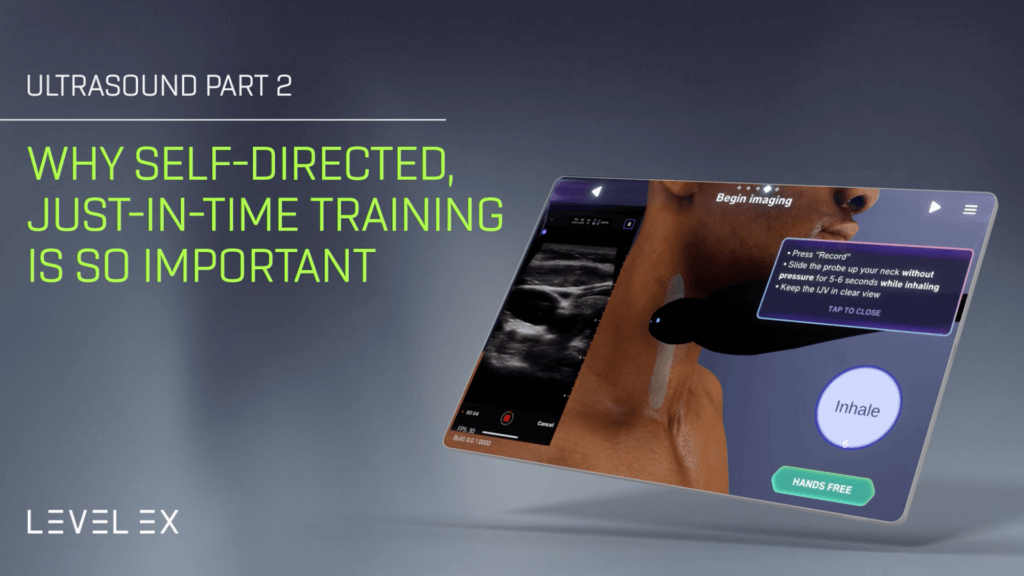
How to Really Rally a Conference Audience: 5 Do’s and Don’ts for Integrating Games, VR, and AR into a Healthcare Conference Booth
We’ve all seen “that booth” before. The one at the conference buzzing with energy, with crowds swarming and attendees craning their necks to catch a glimpse of the mysterious magic inside.
And…we’ve all noticed that nearly-empty booth. The one that people walk swiftly past as the vendors pace and the candy bowl sits untouched.
What makes the difference between a lively healthcare conference booth and an unremarkable one? Does integrating games, VR, or AR do the trick? It’s not that simple. Take VR for example. A common misconception is that adding a VR experience to your booth will automatically draw the masses. In fact, some marketers have shelled out mega bucks to animation agencies that push VR only to learn from experience that this isn’t the case. The secret isn’t in the technology itself, but in how you use it.
Our team at Level Ex has built dozens of AR and VR experiences played by thousands of medical professionals across all specialties, including our latest spine surgery simulation that will debut at the 2022 North American Spine Show (NASS) in Chicago. We are one of a handful of health tech companies in an early access program for a key AR platform.
In this mixed reality experience capturing spine surgery, the spine stands solo on the table and actually changes color in response to the player’s decisions to elicit an intuitive understanding of the impact of each step. Sign up now to play our new Spine XR Experience at NASS.
Straight from our own playbook, here are 5 Do’s and Don’ts when creating a VR version of a medical procedure, technology, or software:
(Note these questions apply to any AR and mixed reality experiences but we’re using VR here for simplicity).
1. Do Create a Spectacle
Trying to attract a larger audience? Keep them in the booth longer? VR could be your ace in the hole, if you use it wisely.
- Showcase what the user is doing. Make sure the crowd can see what the user can see, by broadcasting it on a big screen in front of them… and make sure that whatever they see is breathtaking—with high-quality graphics.
- Get the player moving around. Take advantage of room-scale VR to get the player moving around a physical space. If you use a controller, make sure the player is encouraged to move it in interesting ways (grabbing, hammering, etc.). Yes—this makes a more visceral experience for the player, but more importantly—it also makes it more intriguing for audience members to watch. No two gameplays should be the same. Again, make sure the crowds can really see what’s happening. Make it intriguing so audience members can’t help but stop by.
In 2016, our team created some of the first headset-based VR experiences for physicians – even before the first Oculus officially launched. Our aim was to rally the crowd, and it worked. The devices drew the largest crowd of any booth at an anesthesia conference, despite a suboptimal booth location.
Since then, we’ve continually built conference booth headset experiences for ourselves and for clients using Oculus, Magic Leap, and others. On more than one occasion, we’ve had a client with the same booth location year-over-year at the same conference. This yielded a unique opportunity for a controlled study. We measured that the experience TRIPLED booth traffic, and measurably increased other key metrics like opt-in rate and time-in-booth.
Companies invest heavily in conference booths. When used correctly, VR can measurably increase ROI on that conference investment. Remember: be deliberate, make it worthwhile, and use its attributes to your advantage.
2. Don’t Just Replicate, Teach
The standard goal of most VR built for medicine is to teach – a skill, a technology, a treatment, how to care for a patient. If you’re just replicating in virtual format the same linear steps surgeons are already performing in their O.R., is that teaching anything? Most likely not, but that’s what a large majority of such experiences do: Pick up the scalpel. Find the location on the spine. Click to start. It’s a nice review and interesting, to see it in virtual form, but it’s not actually teaching anything new or anything very effectively.
How do you avoid this?
Consider what we did in our recent VR experience built for spine surgeons: take the spine out of the patient and toss it on the table to play with.
In all seriousness, it’s a neuroscience-backed approach honed from years in the video game industry. Here, we need the players (in this case, spine surgeons) to understand that even during high-precision workflows, the use of certain instruments can cause physical displacement of adjacent bones from where the navigation software has registered them to be. This can result in misaligned screw placement, but that is difficult to see in a minimally invasive procedure. So we strip the experience to the essentials—removing all the tissue, muscle, and skin that obscures the motion of the vertebrae—allowing players to focus on these critical details. We invite them to explore and experience it—the spine actually lights up in response to their decisions and interactions. We enable abstraction and creative thinking so they can intuitively grasp the challenge and develop a lasting mental model for the decision-making steps and device.
Another example is our Gastro VR experience where players can experience the visceral thrill of being the colonoscope. The captivating experience includes action–based objectives that help boost players’ skills and increase competency.
In this Gastro VR experience, players can scope, biopsy, snare, and APC in thrilling gastroenterology cases.
3. Do Extend Your Experience Beyond the Headset
VR is not the only entry point to immersive experiences. It’s not the pinnacle of medical simulations. True, VR headsets are especially great for conferences—they encourage traffic and conversation in your booth (that’s why we often have one in our own booths!) And they offer stereoscopic 3-D, their most valuable benefit. But anyone who wants to create a meaningful and memorable experience needs to ask: what happens when the surgeon walks away from the headset? From the booth?
At Level Ex, one of our guiding principles is that everything we build should be multi-channel—available across any device, anywhere, anytime. As a result, today surgeons across the world are collaboratively practicing complex cases remotely, on common platforms like Microsoft Teams or Zoom. Medical device companies are creating virtual versions of their technology and replicating a hospital site visit—instead of traveling from hospital to hospital (challenging even before the pandemic) or trying to explain multimillion-dollar equipment using a slide deck or videos.
Level Ex games have been played by over 800,000 medical professionals on their mobile devices. Over 80,000 have played our mobile AR content. Compare that to the 8,000 who’ve played our games on headsets—still a huge number—but it illustrates the two orders of magnitude you give up when limiting your experience to VR-only.
Do consider the limitations of headsets and recognize the other engagement possibilities beyond your booth.
4. Don’t Sacrifice Function for Flashiness
Certain scenarios and circumstances work better for VR than others. Video games are the poster-child for 3-D, but we don’t use the format all the time. We don’t have players navigate their avatars to a table at a 3-D casino and manipulate a bunch of 3-D cards to play Solitaire. The card game is better played in 2-D for convenience and a faster tempo.
Yes, VR headsets are especially great for conferences—they encourage traffic and conversation in your booth. Beyond this, it’s important to consider whether it helps teach the specific medical scenario or challenge we’re applying it to.
We have found that VR is especially effective for teaching procedures and skills that require spatial awareness. For example, room-scale VR can be effective when training healthcare professionals on techniques that require them to figure out the best way to position themselves relative to the patient or device, such as intubation or ultrasound-guided interventions. Sometimes however, VR is simply another layer to learn on top of an already complex procedure, unnecessarily increasing the cognitive load and detracting from the very learning objectives that are core to the experience.
5. Don’t Fall into These Common VR Traps
One of the worst offenses in VR is not taking advantage of the virtual space. I once sat in a VR experience where someone was reading off slides the entire time. I wondered why it wasn’t just a video. I wasn’t being asked to move about the space or look around the room—just to sit and watch a presentation.
An even worse offense is an experience that triggers dizziness or nausea. The last thing you want are audience members leaving your booth in worse shape than when they arrived. Our team of biomedical solution specialists and game designers understand the physiology of motion sickness and peripheral vision and how to design games that complement the interaction between our visual and vestibular systems instead of interrupt.
Another frequent mistake? Sitting a player down in an isolated egg chair, stuck in a corner away from the crowd. Avoid ‘lonely’ VR setups that are only experienced by the player with the headset on. The game alone isn’t the sole driver of traffic at a conference. When the audience sees a player actively interacting with and enjoying an “invisible” world, they want to experience it for themselves.
Be mindful not to slip into these VR sinkholes. Instead, ensure the experience is set up to really rally the audience. Make the experience high-energy and make it spectacular. Be “that booth” that everyone can’t stop talking about.
Schedule time with us at NASS 2022, your next conference, or anytime to play our mixed reality experiences or see how we can work together.


